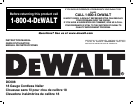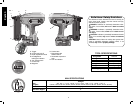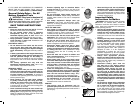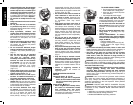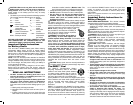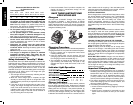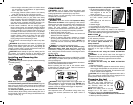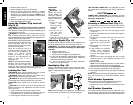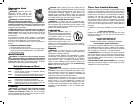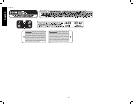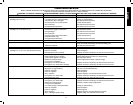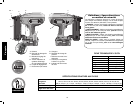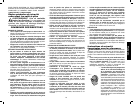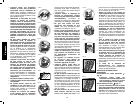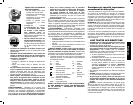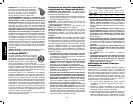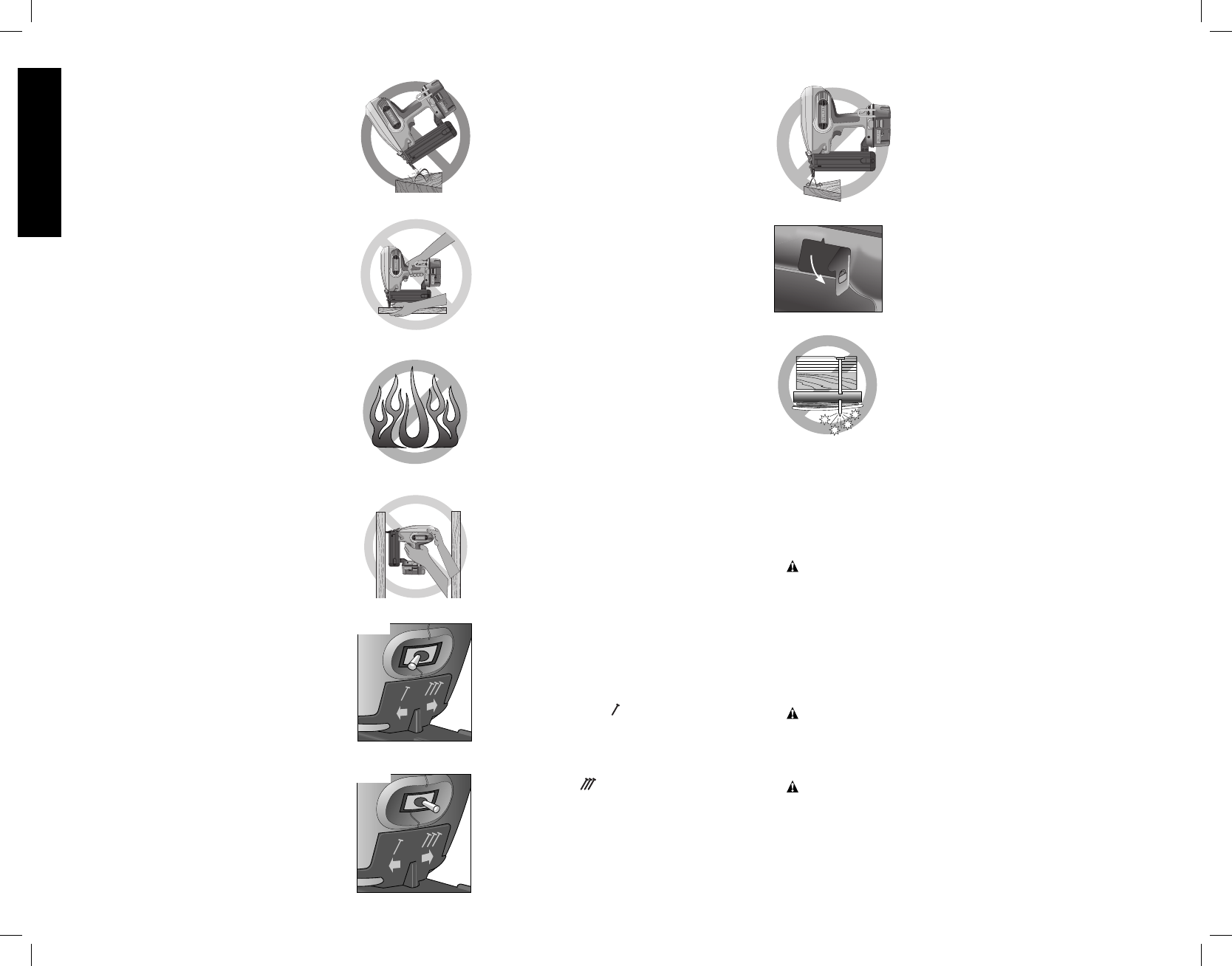
English
4
• Inspect tool before use. Do not operate
a tool if any portion of the tool, trigger,
contact trip lock-off, or contact trip is
inoperable, disconnected, altered, or
not working properly. Damaged parts
or missing parts should be repaired or
replaced before use. Refer to Repairs.
• Do not alter or modify the tool in any
way.
• Always assume that the tool contains
fasteners.
• Do not point the tool at co-workers
or yourself at any time. No horseplay!
Work safe! Respect the tool as a working
implement. (Fig. B)
• Keep bystanders, children, and
visitors away while operating a power
tool. Distractions can cause you to lose
control. When tool is not in use, it should
be locked in a safe place, out of the
reach of children.
• Always use contact trip lock-off when
tool is not in immediate use. Using
the contact trip lock-off will prevent
accidental discharge.
• Do not overreach. Maintain proper
footing and balance at all times. Loss
of balance may cause personal injury.
(Fig. C)
• Use the tool only for its intended
use. Do not discharge fasteners
into open air, concrete, stone,
extremely hard woods, knots or any
material too hard for the fastener
to penetrate. Do not use the body
of the tool or top cap as a hammer.
Discharged fasteners may follow
unexpected path and cause injury.
(Figs. D, F)
• Always keep fingers clear of contact
trip to prevent injury from inadvertent
release of the pusher (Fig. H)
• Refer to the Maintenance and Repairs
sections for detailed information on
the proper maintenance of the tool.
• Always operate the tool in a clean,
lighted area. Be sure the work surface
is clear of any debris and be careful not
to lose footing when working in elevated
environments such as rooftops.
• Do not drive fasteners near edge
of material. The workpiece may split
causing the fastener to ricochet, injuring
you or a co-worker. Be aware that
the nail may follow the grain of the
wood (shiner), causing it to protrude
unexpectedly from the side of the work
material. Drive the chisel point of the nail
perpendicular to the grain to reduce risk
of injury. (Figs. E, F, M)
• Do not drive nails onto the heads of
other fasteners or with the tool at
too steep an angle. Personal injury
from strong recoil, jammed fasteners,
or ricocheted nails may result.
(Fig. G)
• Keep hands and body parts clear of
immediate work area. Hold workpiece
with clamps when necessary to keep
hands and body out of potential harm. Be
sure the workpiece is properly secured
before pressing the nailer against the
material. The contact trip may cause
the work material to shift unexpectedly.
(Fig. H)
• Do not use tool in the presence of
flammable dust, gases or fumes. The
tool may produce a spark that could
ignite gases causing a fire. Driving a
nail into another nail may also cause a
spark. (Fig. I)
• Keep face and body parts away from
back of the tool cap when working
in restricted areas. Sudden recoil can
result in impact to the body, especially
when nailing into hard or dense material.
(Fig. J)
• Grip tool firmly to maintain control
while allowing tool to recoil away from
work surface as fastener is driven. In
Bump mode if contact trip is allowed to
recontact work surface before trigger is
released an unwanted fastener will be
fired.
• Choice of triggering method is
important. Check the manual for
triggering options.
BUMP/SEQUENTIAL SELECTOR
SWITCH
Sequential Action
(Fig. K)
• When using the tool in sequential
action, do not actuate the tool unless
the tool is placed firmly against the
workpiece.
Bump Action
(Fig. L)
• When using the tool in bump action,
be careful of unin tentional double
fires resulting from tool recoil.
Unwanted fasteners may be driven if
the contact trip is allowed to accidentally
re-contact the work surface.
TO AVOID DOUBLE FIRES:
• Do not engage the tool against the
work surface with a strong force.
• Allow the tool to recoil fully after
each actuation.
• Use sequential action trigger.
• When “bump” actuating the brad
nailer, always keep tool in control.
Inaccurate placement of tool can result
in misdirected discharge of a fastener.
• Do not drive nails onto the heads of
other fasteners. Strong recoil, jammed
fasteners, or ricocheted nails may result.
(Fig. M)
• Be aware of material thickness when
using nailer. A protruding nail may
cause injury.
• DEPTH ADJUSTMENT: To reduce
risk of serious injury from accidental
actuation when attempting to adjust
depth, ALWAYS;
• Remove battery pack.
• Engage contact trip lock-off (Fig. N).
• Avoid contact with trigger during
adjustments
FIG. L
FIG. K
• Do not drive nails blindly into walls, floors or other work
areas. Fasteners driven into live electrical wires, plumbing, or
other types of obstructions can result in injury. (Fig. O)
• Stay alert, watch what you are doing and use common
sense when operating a power tool. Do not use tool
while tired or under the influence of drugs, alcohol, or
medication. A moment of inattention while operating power
tools may result in serious personal injury.
WARNING: Use of this product will expose you to chemicals
known to the State of California to cause cancer, birth defects
and other reproductive harm. Avoid inhaling vapors and dust,
and wash hands after using.
• Avoid prolonged contact with dust from power sanding,
sawing, grinding, drilling, and other construction
activities. Wear protective clothing and wash exposed
areas with soap and water. Allowing dust to get into your
mouth, eyes, or lay on the skin may promote absorption of
harmful chemicals.
WARNING: Use of this tool can generate and/or disburse
dust, which may cause serious and permanent respiratory or
other injury. Always use NIOSH/OSHA approved respiratory
protection appropriate for the dust exposure. Direct particles
away from face and body.
WARNING: ALWAYS USE SAFETY GLASSES. Everyday
eyeglasses are NOT safety glasses. Also use face or dust mask
if operation is dusty. ALWAYS WEAR CERTIFIED SAFETY
EQUIPMENT:
• ANSI Z87.1 eye protection (CAN/CSA Z94.3),
• ANSI S12.6 (S3.19) hearing protection,
• NIOSH/OSHA/MSHA respiratory protection.
FIG. H
FIG. G
FIG. I
FIG. J
FIG. M
FIG. N
FIG. O



